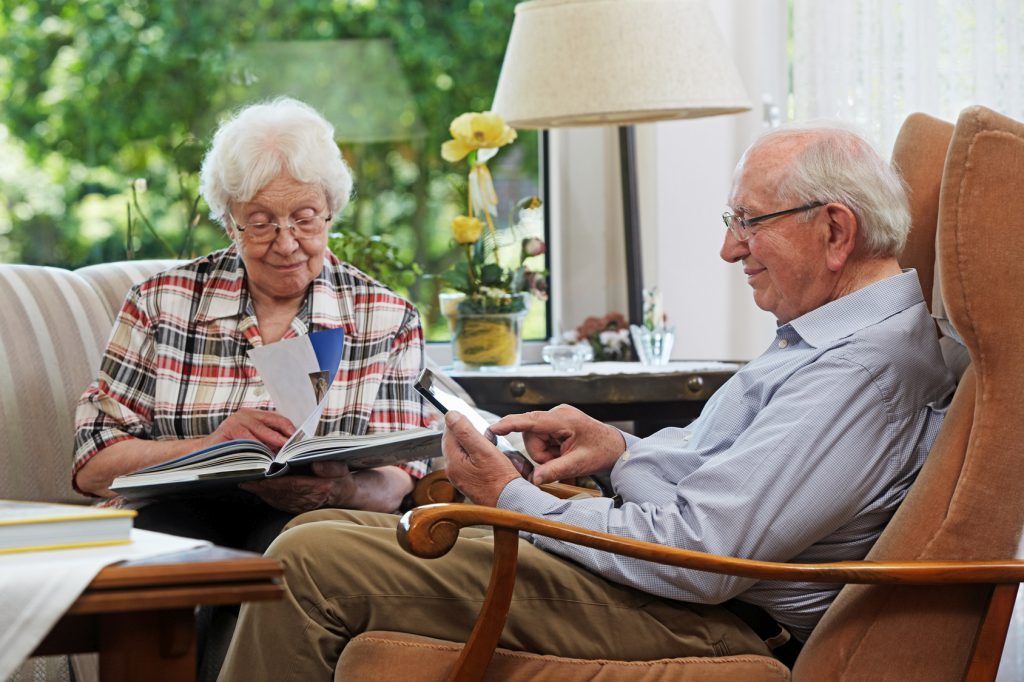„Elderly people need caring humans first, not just sensors and technology” – I read in many comments under articles about technology support tools to combat challenges of an ageing society. It is true that technology does not replace caring relatives and friends – but several elderly people cannot count on daily help of family and friends. Technology can also help the „caring humans” to avoid over commitment, fatigue and burnout. However, one of the key obstacles might still be that many people are still feeling uncomfortable and unfamiliar with several available IT tools.
When we talk about older people, and about healthcare IT technologies, that can improve the quality of their lives, we also must talk about those surrounding these individuals: the caring family, the healthcare providers, doctors, nurses, physicians. They are also affected by the challenges life poses for the elderly. Technology can help them to understand better the condition of the patient or family member, and support the management of daily tasks – if they are open to learn and apply these IT tools.
Smaller and busier family members, a growing percentage of singles
Let’s face it: nowadays families tend to be smaller. Older adults are more likely to be single than earlier generations. So as such, there is much more pressure on those providing caregiving support – data shows, that about two-thirds of people receiving at-home care are getting it from unpaid caregivers like family and friends. On the other hand, most adults cannot give up their work to look after a sick or elderly person in full-time. Charities or public health/social services cannot cover all needs either, which created a market for home care services, from paid domiciliary assistance to nursing services as well as tech apps to substitute basic services previously provided by family members, devoting considerable time and effort day by day, including constant attention and mental load.
So unsurprisingly, the demand for home healthcare services is increasing, with the global market reaching a value of $391 billion by 2021. The sum includes private caregiving, telehealth, medical devices and therapy services. For our grandparents, who live at home, and family members, doctors helping them with tools that improve quality of life and make healthcare delivery easier are essential.
A technology insight to simulate how it feels to be old
What is like to be old? With the help of VR (virtual reality) technology younger people, doctors, medical staff, students can experience firsthand, how does it feel to live with bad eyesight, deteriorated hearing. With the help of a startup that created a VR simulation for physicians, family members or medical students’ subjects can get a feel what is like to be old. Alternatively, as it is shown in the simulation, what is like to live with macular degeneration – patients see a large, dark patch over the sight of loved ones. This project is not treatment oriented, it is not about providing care or a cure. It is about understanding where the patient is, so family members, doctors can be with her/him.
However, technology must come in handy for everybody. Integrating the technology into our daily lives can’t come as a burden – for seniors and for those providing care, either. Patients and staff alike may be nervous around technology at first, but once in their hands, there usually isn’t a return to life without it. Situations where technology is unavoidable and provides an instant benefit may help to familiarize ourselves with technology and explore additional opportunities it can offer.
Natural curiosity can help
Some older people still have a natural interest that helps them bypass their first instinct of not trusting technology. If we are blessed with such parents or grandparents, technology brings us closer. New devices, a pure tablet with a Skype-like video chat enabled must suffice to keep in touch even when they are living remotely.
If the love of technology is not coming in handy, there are passive health IT products available for them as well. For instance, connected sensors can be placed on objects within a home – such as prescription pill bottles or the refrigerator – to detect when the resident is taking medications, getting food, or leaving home. Camera monitoring systems can be installed in these homes, allowing family members to check on their loved ones via remote camera viewing and audible communication. New technologies can also apply methods to restrict details to protect the privacy of the monitored person, while still issuing an alert if necessary.
Smart pillboxes and video consultations might be a good start
Telehealth IT systems can connect patients with doctors, making patient follow up more comfortable. For chronic diseases changing treatment, weekly consultation is less of a burden using telehealth solutions. Expert medical care can be delivered to remote areas, or to people for whom traveling is a challenge.
Technology can help monitor proper medication, even when the caregiver is away. Smart pill boxes or smart pill dispensers – loaded with the appropriate medications once a week or a month – may audibly or visually alert a patient that they need to take their prescriptions. The dispenser can be tamper-proof or lockable to avoid overdosing. More intricate designs incorporate SMS technology to alert the caregiver as to whether a prescription dose has or has not been taken in a specific window of time.
Author: Eva Lajko
